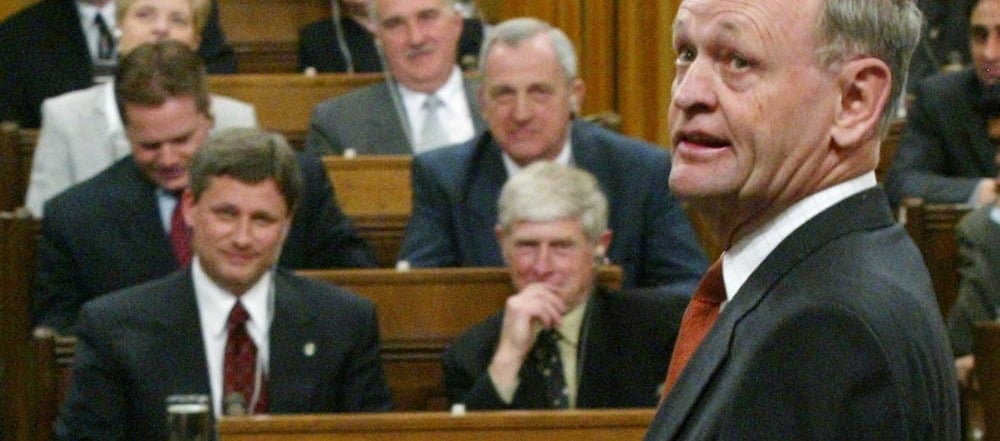How Ottawa banned corporate donations to parties
Says IRPP’s Leslie Seidle of federal rules on raising money: ‘We are at the vanguard’
Fred Chartrand/CP
Share

Maybe what Ontario needs to prompt real reforms to its party fundraising laws—which are under scrutiny today as a result of this eye-opening Toronto Star story—is the prospect of a major political financing scandal. That’s what did the trick in Ottawa.
Back in 2003, then-prime minister Jean Chrétien’s Liberal government was under heavy fire over revelations in what was dubbed the sponsorship scandal. In a bid to clean up the Liberals’ badly tarnished image on the intersection of money and partisanship, Chrétien introduced a landmark law to eliminate corporate and union donations to parties at the federal level, and limit personal contributions to just $5,000 (Stephen Harper later slashed the individual limit to $1,000).
“It was an effort to cut off at the pass the inevitable reaction to what would eventually come out through the Gomery commission,” says Leslie Seidle, a research director at the Montreal-based Institute for Research on Public Policy. “In that respect, it didn’t work.”
Indeed, the party-financing overhaul didn’t come close to shielding the Liberals from the politically damaging report on the sponsorship affair eventually released by Justice John Gomery’s inquiry. Still, whatever the motivation behind the reforms, they now stand as a durable pillar of Chrétien’s legacy. Ottawa has never been quite the same.
Seidle is a longtime expert in the field, going back to his days as senior research coordinator for the royal commission on electoral reform and party financing in 1990-91, and he says ending corporate and union donations to federal parties made Canada “very much a model” internationally. “We are at the vanguard,” he says.
The reforms are all the more remarkable because it was the Liberals who enacted them, the party most liable to be put at a competitive disadvantage. After all, the Conservatives (including, or perhaps especially, their Reform wing) were much better at the time when it came to raising money in small increments from individuals. “The Liberals had been quite reliant on business,” Seidle says, “and it took them until recently to finally get their funding act together.”
Insiders say Alex Himelfarb, who, as clerk of the Privy Council, was the top bureaucrat at the time of the 2003 reforms, was instrumental behind the scenes in pressing Chrétien to end corporate influence through donations almost entirely, rather than taking the less radical alternative step of merely imposing a limit on donations.
Along with the watershed curtailing of big-money influence, the reforms, which came into effect on Jan. 1, 2004, extended Elections Canada’s regulatory reach to cover donations to riding associations, nomination contests, and party leadership races.